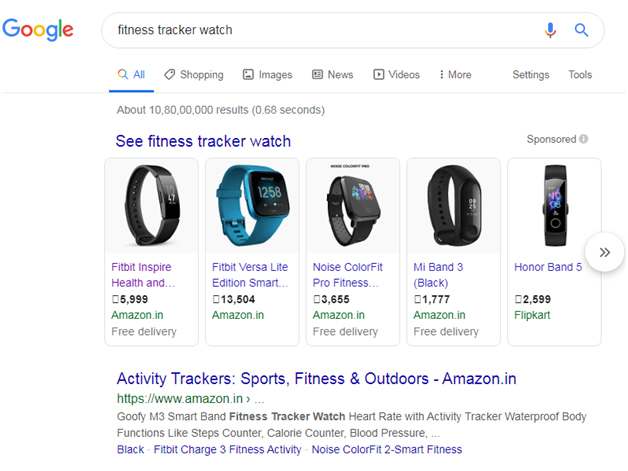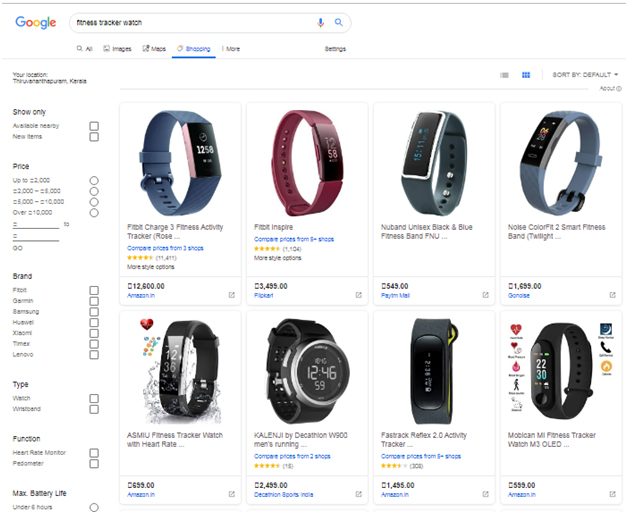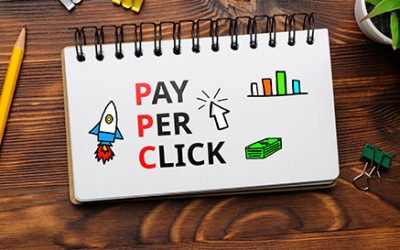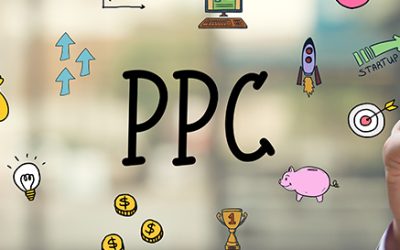Healthcare and medical websites are considered among the top beneficiaries of SEO as their success mostly depends on how easily people find them online. Be it a healthcare organization with a product-based site or a hospital or private practice, SEO campaigns have become the panacea for their inbound marketing requirements. Digital marketing in healthcare is indispensable today. According to the latest reports, 90 percent of the total search market has been devoured by Google and its other search properties (including paid ads and other SERP features). As consumers continue to use Google on mobile and desktop for new product discovery and making new shopping decisions, leveraging a sophisticated Google shopping strategy is important for digital retailers in 2019.
Since their launch in 2010, Google shopping Ads has steadily become a powerful tool for any E-commerce business selling products online. When compared to traditional PPC Google text Ads, these ads have consistently evolved and proven to be more effective. In fact, the 2019 Google shopping benchmarks report found that Google shopping ads grew 29 percent YoY versus only 13 percent of paid search. This demand is driven by an increase in ad spend by retail marketers and Ecommerce businesses. As of 2018, Google shopping ads now drive 76.4% of all retail search ad spend, and this search spend generates 85.3% of all clicks.
What Makes Google Shopping Different?
Google Shopping is the closest thing to window shopping on the internet. It is a Pay-Per-Click advertising opportunity that is profitable for sellers as it is for the shoppers themselves. This shopping platform consists of product listing ads that appear at the top center or top right of a Google search results page when someone searches for a product.Through this medium, buyers can easily compare product details as they search and sellers also can promote their products and benefits. Potential buyers can view the make, model and price of a specific product before they even click through. If they do not like the product or think it is too expensive, they can quickly move on to the next “shop window.” The result is – qualified traffic that is more likely to convert.
For instance, when a prospective buyer searches in Google for “fitness tracker watch,” this is what a buyer sees –
This prime area on the first page is mainly reserved for Google Shopping. The ad contains specific information including the product image, product title, merchant name and price while on the shopping tab users can view the product details, filter results, and compare prices.Google Shopping ads are very effective in showcasing products and attracting high-quality prospects by appearing on the general search results, the images tab, and the shopping tab.
How Do You Run Google Shopping Ads?
In order to run Google Shopping Ads, you need to have two accounts (working together) – Google AdWords and Google Merchant Center. Google Merchant Center includes your data feed – which is a collection of information about your product inventory including title, description, price, image, description and several other data points formatted in a specific way that Google likes. Google uses your data feed to develop product ads and uses the same to identify when to showcase these ads. Google Merchant Center also helps you create rules related to shipping, sales tax and selecting your target country. Google AdWords, on the other hand, is where the actual shopping campaigns become live. This involves creating daily budgets, bids, ad groups and product groups.
However, Google shopping management and optimization have many similarities to good SEO. When compared to traditional text ads, it is not possible to explicitly specify what type of keywords you want your product listing ads to show for. Instead, Google crawls your data feed and find out what queries or keywords your product listing ads are relevant for. Therefore, it is essential to furnish Google with good data that it can strategically put together.
Here are some ways that help improve the overall success of your Google Shopping Campaigns –
- Optimize your product data – Optimizing your product feed helps improve your rankings in both organic and paid search results.
- Product title – An important attribute that will impact your ranking, the product title should include the relevant keyword(s), be descriptive, and reflect the language that consumers use in their searches. The key is about being as descriptive as possible while also keeping it simple and direct at the same time.
- Product description – Description of the product should be information-rich and include relevant SEO keywords with the correct product attributes. Place the key terms within the first 150 characters for capturing the full attention of prospective buyers.
- Link – This is the landing page – product page URL – to which the ad will redirect users. Make sure it contains accurate information.
- Product image – Use top quality product images and remove overlays such as logos or watermarks, which could cause Google to reject your ad.
In addition, include as much product data as possible, such as price, category, availability, unique identifier, condition, and gender/age/color/size.
- Fine-tune your bids – Once, your ad gets started for a few weeks, you would have gathered enough data to adjust the bidding strategy and modify your campaigns. Use tools like “Google Ads Filters” to set up custom product segments. You can set up automated rules that optimize for things like more clicks, greater conversions or a target return on an ad. Make sure to save the filters (zero impressions, low CTR, products with conversions) which can be reused to increase efficiency. Once the filters are created, you can adjust the maximum CPC bid more efficiently at a granular level. Bid modifiers can also be set for specific segments (such as, based on device or location).Also, make sure to use negative keywords so that you don’t pay for search terms that get clicks but don’t convert.
- Create showcase shopping ads – Showcase shopping ads are a great option for introducing your brand to consumers and help them decide which merchant to choose for purchase. More visually focused, this can be a great way to catch the eye of a potential buyer. Appearing at the top of broad, non-branded searches, this feature allows creating ads that include a collection of related products and involve broader search terms – without specifying the product size, color, or brand. It is possible to control the specific products shown in your ads and track conversion in real time.
- Create Google Shopping Actions – This ad platform provides a faster and simpler way for consumers to purchase products. Instead of driving users to your website, Shopping Actions enables purchasing directly from Google.
- Participate in Google Shopping programs – To increase the effectiveness of ads, Google offers special programs for advertisers. These programs help attract the attention of shoppers in order to drive high-quality traffic thereby increasing the ROI. Some of these shopping programs include product ratings, merchant promotions and friction less shopping actions.
- Separate device targeting – As more people now use Smartphones for shopping, it is more likely that a majority of the budget will be allocated to mobile. This could cause the campaign budget to end early and you could lose out on sales not only from mobile users but also from people who use other devices such as desktop and tablets for shopping. The shopping behaviors of people vary based on the devices they use. Create separate campaigns targeting each specific type of device. Set an individual budget, content, and bidding strategy for each campaign based on shopping preferences, and behaviors (specific to each device) in order to maximize ROI.
- Focus on Audience-based Remarketing (RLSA) Ads – Reports suggest that RLSA is estimated to reduce the average cost-per-acquisition by 53 percent and increase conversion rates by 10 percent. RLSA ads allow you to allocate more of your ad spend on audiences that have shown interest in your brand or products earlier. Remarketing helps you reach shoppers who have already visited your website. You can promote products they have shown interest in so they return and make a purchase. Setting up remarketing ads is quite simple. Simply create audiences in Google Analytics, target your ads, and set your bid modifiers to allocate more funds to these specific segments. Focus on more general segments, such as all visitors, abandon cart, and abandon checkout.
Google Shopping Campaign is an effective advertising platform which you cannot ignore. These campaigns help reach out to targeted group of customers with high purchase intent. Google is constantly adding new innovative features to help advertisers yield better results. Professional medical SEO providers stay updated regarding such new features and they can help online medical stores to successfully meet their digital marketing goals.






